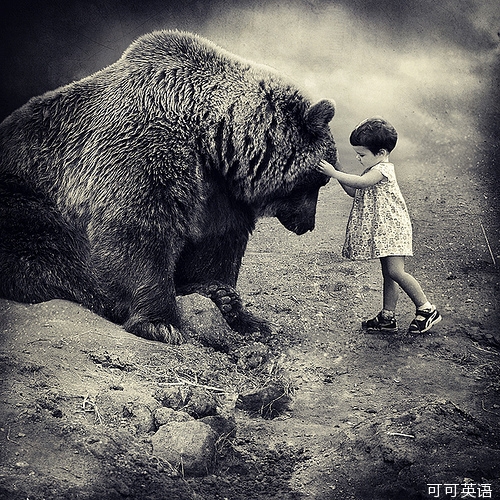Today's Moment of Science "digs up" the story behind one of the grizzly bear's more unusual nicknames: the "Rototiller of the Rockies."
今天科學一刻將會深入"挖掘"灰熊的一個不同尋常的綽號背后的故事,這個綽號就是"落基山脈的旋耕機"。
Grizzly bear claws are huge–usually three to four inches long. This is perfect for an animal who survives by digging around in the landscape, unearthing tasty treats like ground squirrels and root vegetables.
灰熊熊掌很大,一般有3到4英寸長。這種尺寸對于靠挖食為生的動物來說是極為有利的,它們能夠在地里挖掘出美味的食物,如地松鼠、根莖類植物等。
One of the grizzly bear's favorite early season foods is the glacier lily, a beautiful yellow flower with a starchy, nutritious bulb. Bears "till" up the land, turning over chunks of soil to access those tasty bulbs. And guess what: scientists working in Glacier Park, Montana have learned that this "tilling" has some important side effects. Areas with recent bear diggings have less plant diversity and higher nitrogen levels than undisturbed parts of the landscape.
早春季節,灰熊最喜歡的食物之一就是冰川百合,這是一種非常美麗的黃色花朵,它的球莖內含有大量淀粉和多種營養物質。灰熊會刨開土壤來尋找美味的球莖。你知道嗎:在蒙大拿冰川公園的科學家們了解到,灰熊的這種挖掘方式會對土壤產生一些副作用。灰熊挖過的區域會造成植物的多樣性減少,并且土壤的含氮量會高于那些沒被挖掘過的區域。

Without much competition from other plants, left behind glacier lily bulbs can quickly regenerate, and these new lilies produce twice the usual number of seeds, thanks to the nitrogen rich soil!
由于沒有來自其它植物的競爭,冰百合能夠迅速繁殖,同時,由于土壤含氮量高,新生的百合能夠產出比平常多一倍的種子。
We humans have also gained important culinary knowledge. You see, after digging up glacier lilies, bears often leave the bulbs for a few days to wilt in the sun.
我們人類從中也了解到很重要的烹調小貼士。你看,灰熊挖出球莖后,通常會將它曬上幾天。
This "cooks" them a bit, and makes them sweeter and easier to digest. First Nations lore shows that early peoples learned to dry and cook glacier lily bulbs by copying the grizzly bear.
曬過之后的球莖會更甜,更容易消化。據原住民記載,早期的人類就是通過模仿灰熊才學會曬干和烹制冰川百合的。












